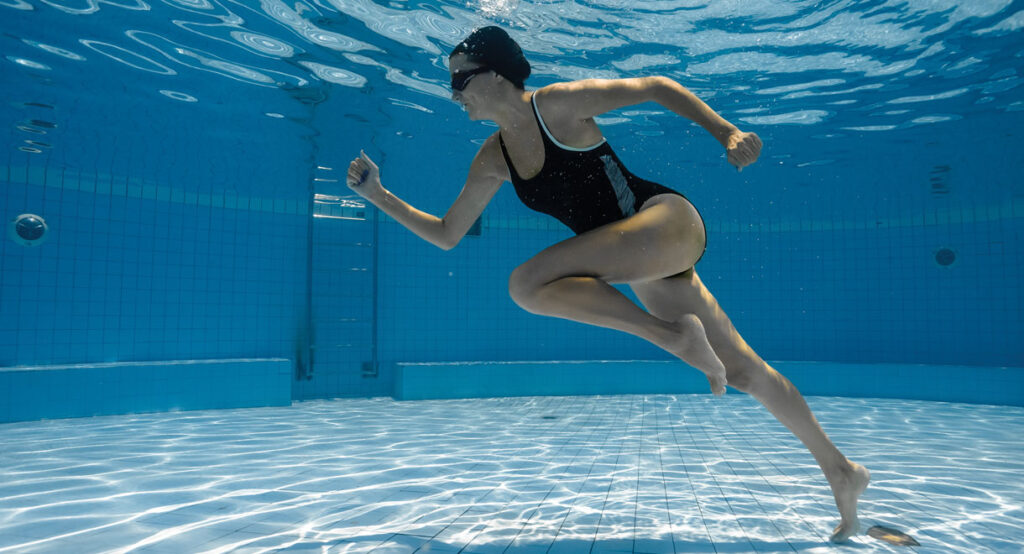Author – Len Kravitz, Ph.D and J.J. Mayo, Ph.D.

From this review of literature on the cardiovascular and energy expenditure responses to aquatic exercise, the following is a summary of findings:
Adding arms to leg exercise in chest deep water significantly increases the energy cost of the workout. This may equal or exceed matched exercise performed on land.
Water jogging and running in waist-deep water results in equal or even greater cardiovascular responses compared to similar exercise on land.
Aqua exercise routines can meet ACSM guidelines for the improvement of cardiorespiratory endurance. However, the ACSM guidelines for improvement of cardiovascular fitness may need to be adapted for aquatic training, since current standards prescribe only for land- based exercise.
Bench stepping exercise in water, using the arms, meets ACSM guidelines for the improvement of cardiorespiratory endurance.
Water exercise using elastic resistance with the upper body does not significantly increase energy expenditure.
Investigations have found the cardiorespiratory responses of deep water running to be less than, similar, and greater than treadmill running on land.
Blood lactate levels in deep water running have been shown to be higher and lower to land exercise which may reflect variations in arm and leg actions and exercise protocols.
Ratings of perceived exertion for DWR appear to be elevated due to higher blood lactate levels and upper extremity muscular fatigue.
The hydrostatic pressure and altered running style (due to different muscle activity patterns of DWR) contribute to a greater involvement of the anaerobic energy system during deep water running.
There is an increase in breathing frequency and cost of breathing during water exercise which leads to the respiratory muscles consuming more oxygen. This may function to limit the oxygen available for the legs.
The more familiar subjects are to DWR, the smaller the difference between VO2max values between land and water.
Exercise heart rate and oxygen consumption comparisons of teenage females in land and water exercise appear to result in similar responses to those seen in adults.
